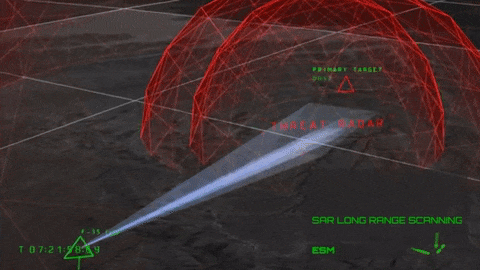I have already posted here that on level of technology russian airborne Radars are decades behind , yet people still keep claiming russian tech to be something extraordinary.
Russia is about 5 years or perhaps 10 years behind in the semiconductor industry. This however, does not mean that they cannot innovate or use clever techniques or programming to be on equal footing. People forget the Soviet Union was the first country to put PESA radar on a fighter. Russia was the first country to have PESA/AESA hybrid and the first country to implement side lobe radars.
Most of the Russian high tech comes from western Europe.
Absolute nonetheless. Russia has imported a very limited amount of technology from Europe or Israel and that technology has been getting fazed out and replaced anyways. The French HUDs are replaces, the Israeli sources drones are getting their avionics replaces by Russian ones. I believe Malaysia also opted for Russian jammers over French ones and the Indians are also adapting Russian jammers. Russia has a very hard time sourcing anything from Europe or the US which I will talk about more.
Off the shelf tech is keeping them afloat.
This is way off. There are strict import and export laws between the US and other countries especially in Europe (I recently had to take classes on this where I work because of the industry I work in). People have been arrested trying to export even wet suits and rubber motorboats to hostile nations like China. Every major industry in Russia has been under sanctions for almost 5 years so I don’t no where you are pulling this brilliant information from.
If it were as easy as you think North Korea and Iran would have had AESA radars and other hi end technology by simply importing. Lastly, you may not know this but some microprocessors are designed where they can only work in a specific applications. This is done to preserve intellectual property and stop theft, so even if Russia somehow got some fancy technology from a foundry it would be totally useless.
In one on one Rafale has a high chance of smashing SU 35. Just look at the airborne radar design of western and russian radars here.
I’m sure you speak from personal experience. In the past even old Mig-25s have downed F-18, MiG-23s downed F-14s and Mig-21s downed F-4s. The SU-35 has a number of advantages over the Rafale and as I mentioned earlier even inferior Russian aircraft have shot down superior western aircraft before.
The SU-35 radar still has greater range and the R-37M missile also has greater range over the Meteor, admittedly it is a less maneuverable missile.
RBE 2 AESA( Rafale )
AN/APG 81 AESA( F 35 )
Yet a small Zhuk Radar now offers over 1000+ TR modules compared to about 840 from an REB2. Which is an important factor.
Now russian radars.
SU 57 AESA
Yea, what about it? It still easily outperform the REB2 and when the side lob radar combines beam steered with the main radar it will have performance the Rafale can only dream of. More TR modules, concentrated in a single spot provides far greater range, resolution and accuracy.
You can see the difference in there antenna arrays. While all western AESA use notch radiators , russian radars use slot, patch or ring/loop radiators. Notch radiators offer higher bandwidth , higher directivity, can take higher power loads etc than the other types. This will directly affect radar performance and give them advantage over russian radar.
Yet you are disregarding TR modules and their spacing along with many other factors such as phase shifters and the hardware and software that goes from the subarrays to be processed and input throughout various weapons systems.
The Zhuk has quite a good TR count for its size and so does the N036 especially when combined with the side lobe radars. Even an AESA using patch modules can outperform and slot arrays if there are more TR modules, those modules are spaced closer.
All AESA radar shoot random beams using their modules in the search mode, the range in this mode is limited compared to when the modules are focused on one or a few targets such as when a target is tracked. In other words once TR modules focus their power on specific areas, the range, desolate accuracy improve. The spacing is important because, the wider apart the modules the more energy is wasted usually from side lobes radiating.
Most of this is from your source so you should understand:
As I stated early the TR count or arrays improve performance in all parameters. Here is an example of that. You can read more in the link for further details.
This is why array placement or TR density is so important. The closer the arrays the more concentrated the power with less energy expended.
The Zhuk is extremely tightly packed. If it were to use slotted arrays the TR modules would appear even tighter. 1000+ modules is impressive for such a small radar. The arrays packed this tight should give the Zhuk very good performance, at least comparable or better to the REB2.
This is a Russian AESA TR modules, you are wrong. Russia can make slotted arrays and they do not need to import.
@Karthi he probably got it here:
Introduction to Antenna Antenna is an electrical device which converts electric power into radio waves, and vice versa, antenna are used not only on radar but also on jammers, RWR and communicat…

basicsaboutaerodynamicsandavionics.wordpress.com

 by their fan boys claim?
by their fan boys claim?
